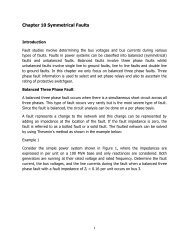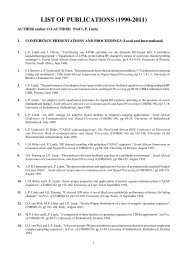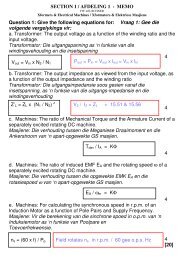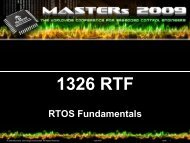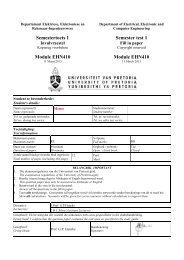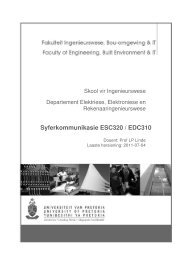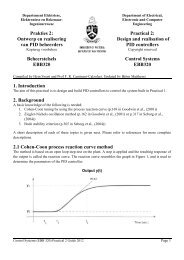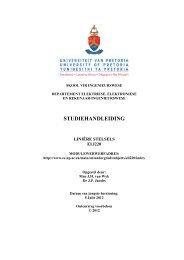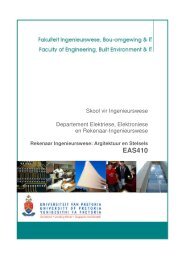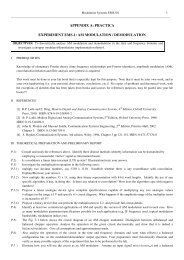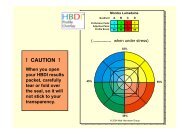Vakkursus EMS310/311 Course EMS310/311 - Electrical, Electronic ...
Vakkursus EMS310/311 Course EMS310/311 - Electrical, Electronic ...
Vakkursus EMS310/311 Course EMS310/311 - Electrical, Electronic ...
You also want an ePaper? Increase the reach of your titles
YUMPU automatically turns print PDFs into web optimized ePapers that Google loves.
5 Herlei uitdrukkings vir die ontvanger intree S/R (na die ontvanger-BDF) en die ontvanger uitgang S/R, (SNR) i<br />
and (SNR) 0 repektiewelik, in die geval van AM-DSB-OD met moduleersein m(t) en Tx en Rx draers van<br />
%2cos(ωct) en %2cos(ωct+θ), onderskeidelik, met θ=π/4 [rad]. Aanvaar `n perfekte BDF by die ontvanger en `n<br />
SWG- kanaal met tweesydige DDS N/2 [W/Hz]. Beskryf die volledige demodulasieproses analities. Hoe<br />
vergelyk die S/R-werkverrigting van hierdie AM-DSB-OD stelsel met die ideale basisband-verwysingstelsel in<br />
4 hierbo? Verklaar enige verskille.<br />
Derive expressions for the receiver input (after the Rx BPF) and the receiver output SNRs, (SNR) i and (SNR) 0,<br />
respectively, in the case of AM-DSB-SC with modulating signal m(t) and Tx and Rx carriers of %2cos(ωct) and<br />
%2cos(ωct+θ), respectively, with θ=π/4 [rad]. Assume a perfect BPF at the receiver and an AWGN channel with<br />
two-sided PSD N/2 [W/Hz]. Show the complete demodulation process analytically. How does the SNR<br />
performance of this AM-DSB-SC system compare with the ideal reference baseband system in 4 above? Explain<br />
any differences.<br />
EINDE<br />
END<br />
<strong>EMS310</strong>_Klastoets2_07.wpd LPL/04/07 6 / 7<br />
[6]



